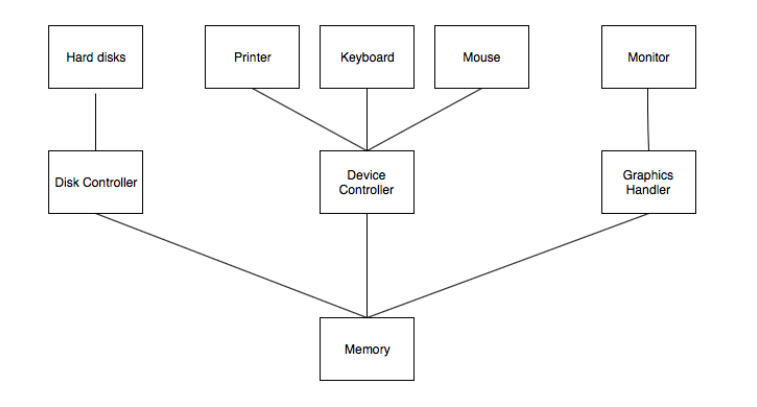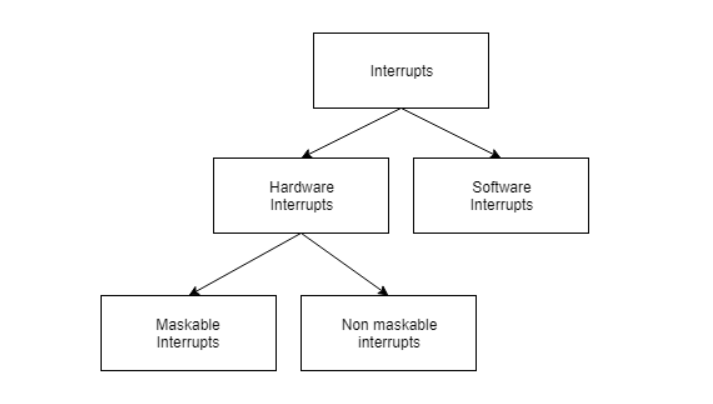
 Data Structure
Data Structure Networking
Networking RDBMS
RDBMS Operating System
Operating System Java
Java MS Excel
MS Excel iOS
iOS HTML
HTML CSS
CSS Android
Android Python
Python C Programming
C Programming C++
C++ C#
C# MongoDB
MongoDB MySQL
MySQL Javascript
Javascript PHP
PHP
- Selected Reading
- UPSC IAS Exams Notes
- Developer's Best Practices
- Questions and Answers
- Effective Resume Writing
- HR Interview Questions
- Computer Glossary
- Who is Who
Computer System Organisation
The computer system is a combination of many parts such as peripheral devices, secondary memory, CPU, etc. This can be explained more clearly using a diagram.
The salient points about the above figure displaying Computer System Organisation is ?
- The I/O devices and the CPU both execute concurrently. Some of the processes are scheduled for the CPU and at the same time, some are undergoing input/output operations.
- There are multiple device controllers, each in charge of a particular device such as keyboard, mouse, printer etc.
- There is buffer available for each of the devices. The input and output data can be stored in these buffers.
- The data is moved from memory to the respective device buffers by the CPU for I/O operations and then this data is moved back from the buffers to memory.
- The device controllers use an interrupt to inform the CPU that I/O operation is completed.
Interrupt Handling
An interrupt is a necessary part of Computer System Organisation as it is triggered by hardware and software parts when they need immediate attention.
An interrupt can be generated by a device or a program to inform the operating system to halt its current activities and focus on something else. The types of interrupts are better explained using the following diagram ?
Hardware and software interrupts are two types of interrupts. Hardware interrupts are triggered by hardware peripherals while software interrupts are triggered by software function calls.
Hardware interrupts are of further two types. Maskable interrupts can be ignored or disabled by the CPU while this is not possible for non maskable interrupts.



